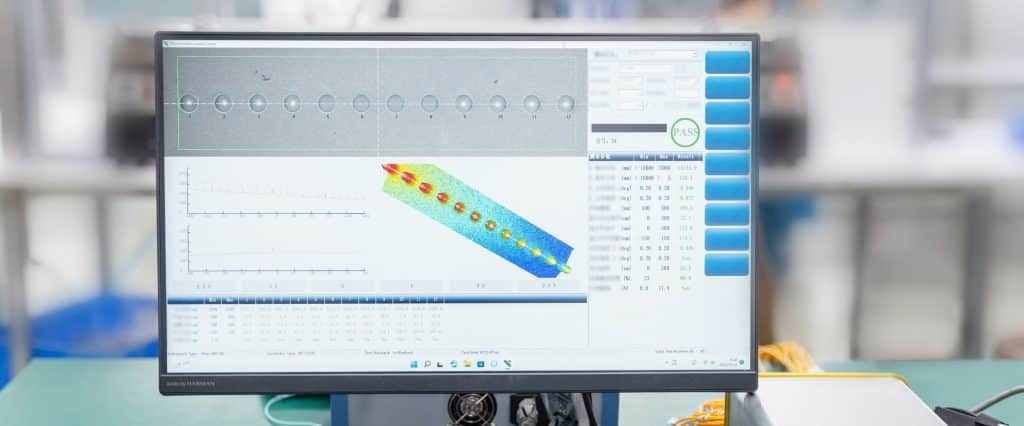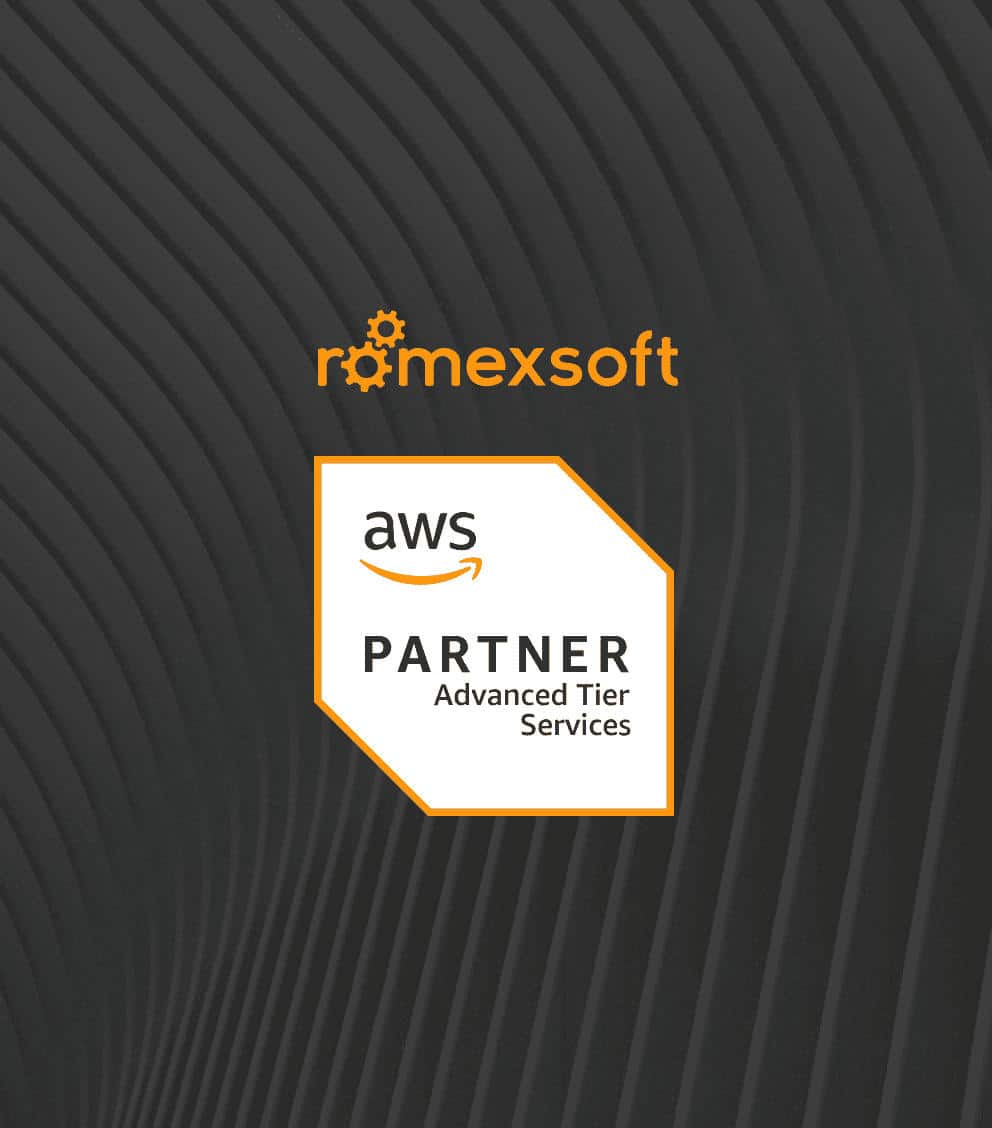What You Should Know about Data Analytics in Healthcare
Predictive modeling is transforming the health sector by utilizing vast data, AI, and machine learning to anticipate patient needs. This shift from reactive care to proactive forecasting holds immense potential, as it enhances care quality and minimizes expenses. This article explores how this technology functions, its key benefits for patient care, and the real-world challenges it helps overcome.
The blog discusses:
- definition of data analytics in healthcare
- role in the industry
- types of health data
- use cases in healthcare
- barriers and fixes
- emerging trends

Table of Contents
Equipped with substantial datasets, artificial intelligence, and machine learning as its foundation, data analytics is shifting health provision from reactive care to a significantly more proactive approach. Insight-based technology fuels better diagnoses, personalized treatments, which ultimately lead to improved outcomes, as well as optimized resource utilization. In this article, we will look into this technology’s operational mechanisms, advantages for medical care, and use cases.
Table of Contents
What is Data Analytics in Healthcare
In the medical sector, data analytics represents a structured procedure that leverages and interprets large amounts of diversified data to fuel improvements in patient care and simplify operational workloads. The core of this approach lies in integrating data from different sources (e.g., clinical records, patient demographics, treatment outcomes, financial documentation) and using advanced algorithms and statistical methods to extract insights. What it achieves is a proactive, adaptable healthcare delivery system that uses data-based decision-making and predictive insights to improve diagnostics, personalized treatment strategies, and hospital resource allocation.
Why is Data Analytics Important in the Health Sector
The role of data analytics in healthcare is defined by its ability to transform raw information into actionable insights. This feature powers improvements in not only diagnostics and personalized treatments, but also resource management. Several significant advantages that the approach delivers to the medical sector are presented further.
- Improved Patient Outcomes
With data analytics, clinicians can accurately identify potential health risks at early stages of the treatment and create customized treatment plans. Its subcategories, predictive and prescriptive analytics, perform specific functions: predictive analytics highlights high-risk patients to trigger prompt preventive measures, while prescriptive analytics helps choose the most effective treatments. This results in higher recovery rates and minimum complications. - Enhanced Operational Efficiency
Data analytics helps hospitals predict patient demand, which leads to better staff management and resource allocation. Among many other benefits, data analytics achieves minimum wait times, streamlined bed management, and elimination of unnecessary procedures and readmissions. By using data analytics, health facilities reach peak performance efficiency while maintaining smart asset allocation and minimizing expenses. - Preventive Care
Performed by data analytics, thorough analysis of big data volumes allows for the detection of risk factors and prompt interventions that help prevent disease development. Based on the examined data, clinicians design targeted preventive care programs that address the identified risks and improve patients’ quality of life with minimized costs of long-term treatment. Data insights delivered by data analytics enable prompt interventions that lower the chance of expensive treatments in the future and help keep healthcare practices sustainable. - Improved Patient Engagement
By providing patients with digital access to their personal information, data analytics empowers them to become more actively involved in their own care management. At the same time, features like improved communication and personalized feedback promote a clearer understanding of treatment plans. Such a feature entails better outcomes through autonomy and consistency. What data analytics demonstrates is that the more engaged and informed the patients are, the more likely they are to participate in decision-making and actively pursue healthier lifestyles. - Population Health Management
With the holistic approach offered by advanced data analytics, clinicians can identify vulnerable social groups and promote unified outreach initiatives. By using predictive AI models, healthcare providers can design and implement personalized interventions that address the unique needs of varied demographics. Finally, monitoring clinical outcomes of these interventions helps medical professionals design more accurate treatment strategies and improve public health. - Optimizing Supply Chain Management
When it comes to resource management, data analytics delivers relevant insights into inventory levels, demand forecasts, and vendor performance. The achieved visibility helps clinicians avoid stock-outs, reduce waste, and guarantee timely access to vital medical supplies. By optimizing procurement and leveraging usage data, health systems boost supply chain quality and reliability, all while significantly reducing operational costs.
Types of Data Analytics in Healthcare
Healthcare data analytics involves more than one kind of examination; it’s a spectrum of methods designed to extract specific insights. Understanding these distinct types helps gain a comprehensive view of how they contribute to understanding past trends or predicting future needs.
Descriptive Data Analytics
The first type of data analytics analyzes historical data to identify hidden patterns, trends, and deliver insights into past events. Medical institutions can use descriptive analytics to define, for example, common reasons for admissions and the factors that caused them. Because this is the type of data analytics that provides insight into what happened to trigger a certain clinical situation, it serves as the groundwork for all other analytics.
Diagnostic Data Analytics
This subcategory examines data to identify why certain events occurred. Its function is demonstrated by how it can uncover the underlying reason behind medical conditions, such as why certain patients have a higher chance of experiencing post-surgery complications. Diagnostic analytics is defined by thorough analysis of data details, a feature that makes this technique ideal for identifying factors that triggered specific health outcomes.
Predictive Data Analytics
Statistical algorithms and machine learning drive predictive analytics to forecast future medical events. With this technology, healthcare providers can anticipate patient needs, disease outbreaks, the development of chronic conditions, or any other clinical scenarios that are likely to happen in the future. Predictive analytics uncovers future trends and helps clinicians to manage resources and plan interventions accordingly.
Prescriptive Data Analytics
The last subcategory of data analytics goes beyond simply identifying the issue by giving instructions on further decisions based on extracted data. It is often used to guide the best course of treatment for a patient. Prescriptive analytics gives clinicians a plan on how to proceed with treatment plans for better patient outcomes, as well as delivers practical solutions to optimize care and operational decisions.
What Data Can be Analyzed in Healthcare
Healthcare data is introduced in several diversified formats, and comprehending these various formats is essential for optimizing patient care, streamlining operations, and enhancing public health strategies. In this section, we will describe the main data types as well as provide lists for clarity.
Clinical Data
Clinical data involves every bit of information that is related to patient health and provides a full picture of a patient’s continuous treatment. The information it spans includes types of data used for customized care plans and detailed diagnostics. It can be categorized into several key components, which are:
- EHRs/EMRs: These are digital records that contain a patient’s complete medical history, diagnoses, medications, allergies, immunizations, and lab results.
- Clinical Notes: They are made up of unstructured text derived from patient encounters (e.g., prescriptions, diagnoses, procedures) that can be put through Natural Language Processing (NLP) for deep analysis and practical insights.
- Lab Reports: Introduced by results from diagnostic tests, these are essential for evaluating a patient’s condition.
- Medical Images: They involve visual data from X-rays, CT scans, MRIs, and digitized pathology images. This data source is vital for critical for accurate diagnoses.
- Genomic and Omics Data: It is introduced by Information extracted from DNA, RNA, and other biological molecules, and is highly important for understanding disease mechanisms and enhancing personalized medicine.
- Observations and Measurements: They cover vital signs and other real-time physiological data, such as ECGs and EEGs.
- Treatment Histories and Outcomes: Records within this data source track the treatments received and their subsequent outcomes.
- Medical Device Data: This data category spans medical device data, encompassing input from remote monitoring tools and wearables.
Administrative and Operational Data
This data source is represented by the aspects of healthcare that are not related to [] but are responsible for maintaining efficiency in the operational processes of health systems. They are introduced by several types of data, namely:
- Financial Data: This source covers billing, payments, and revenue cycle information.
Operational Data: Information like details on patient flow, staffing, resource allocation, bed management, and operating room schedules is invaluable for optimizing operations. - Supply Chain Data: It involves information related to tracking the procurement and management of medical supplies.
- Human Resources Data: This category contains data about healthcare staff and personnel.
Claims Data
Claims data from insurance submissions encompasses information such as patient demographics, diagnostic and procedural codes, service dates, and related financial figures (e.g., fees, payments) that help identify what services were delivered and associated expenses. Upon investigation, the details of these claims can reveal hidden trends in service utilization and help clinicians improve their reimbursement strategies. Additionally, analyzing this data can assist in detecting discrepancies and potential fraud, a capability that supports optimal and efficient resource management.
Patient-Generated Data
As one of the most important data categories, patient-generated data represents medical information obtained from environments beyond traditional clinical settings. There are two main sources of such data, introduced by either of the following.
- Wearables and Devices: Fitness trackers and other monitoring gadgets constantly collect health metrics.
- Patient Surveys and Feedback: Data such as direct inputs from patients about their experiences, satisfaction, and outcomes help develop more responsive healthcare strategies.
Public Health Data
Focused on wider demographic insights, public health data provides a more comprehensive view of population-level health. It involves a vast variety of indicators that can help healthcare professionals and policymakers identify future health trends and vulnerable social groups, which leads to more timely and efficient public health initiatives. There are four main sources of public health data, namely:
- Immunization Rates: These involve insights into vaccination coverage that uncover levels of community protection.
- Disease Outbreaks: This source contains data tracking the prevalence and spread of infections, which is needed for early interventions.
- Public Health Initiatives: They are represented by evaluations of public health programs designed for improving community health and shaping policy decisions.
- Community Risk Information: This data source covers analysis of factors that affect population health, which helps clinicians develop proactive measures and long-term strategies.
How is Data Analytics Applied in Healthcare
As already mentioned, in the medical sector, data analytics fulfills a large number of functions, intending to enhance patient care, optimize operations, and support research and innovation. The key to achieving these benefits is data-based decision-making, facilitated through the integration of advanced technologies such as predictive models, machine learning, and generative AI, and enabled through analysis of diversified datasets. In this section, we will provide a structured overview of key applications of data analytics.
Improving Patient Outcomes
Equipped with data analytics, clinicians can detect potential health risks and complications, develop intervention plans before deterioration, and make more precise diagnoses. While predictive data analytics highlights patients vulnerable to chronic diseases, prescriptive data analytics creates customized treatment plans tailored to patients’ medical history and genetic profiles. The ultimate benefit is minimized hospital readmissions and advanced precision medicine.
This approach is demonstrated by how Children’s Hospital of Orange County (CHOC) partnered with a healthcare development company to develop HealtheDataLab, a cloud-based ML solution built on AWS that analyzes diversified data to forecast which patients have high chances of readmission. By following this advanced approach, CHOC can enhance discharge planning, coordinate follow-up care, and provide families with the necessary resources and education to care for their children at home.
Quality Metrics Reporting and Operational Optimization
Another advantage clinicians gain from using data analytics is being able to forecast patient demand, manage staffing levels, and optimize resource allocation without compromising quality and safety standards. Indicators such as patient flow, bed management, and operating room schedules provide hospitals with insights on how to reduce wait times and lower unnecessary procedures, resulting in minimized expenses.
In addition to that, robust analytics platforms encourage exhaustive reports on care quality and outcomes that assist organizations in such areas as performance supervision, regulation compliance, and detection of improvement opportunities. All of these features bring benefits to both operational and clinical aspects of healthcare.
Preventive Care for Disease Prediction
Among other benefits, leveraging data analytics helps proactively identify risk factors and predict potential health issues, a feature that enables clinicians to intervene early on and avoid health deterioration. Fueled by big data volumes, predictive models, and machine learning highlight patients vulnerable to such conditions as exacerbations and allow medical professionals to intervene promptly.
A prime example of this approach is demonstrated by Propeller Health, a digital health company that specializes in handling chronic respiratory conditions like asthma and COPD. This organization uses AWS machine learning to forecast patient health outcomes based on diverse factors like local weather conditions and recently used medication. Not only does this platform track existing conditions, but it also anticipates potential health deterioration and supports timely preventive actions (e.g., medication adjustments, trigger avoidance) to help reduce health declines and improve overall well-being.
Improved Patient Engagement
By arming patients with digital access to their health information, data analytics facilitates even more proactive care management. Platforms integrated with this advanced technology are often used to evaluate appointment history, medication refill patterns, communication preferences, and health demographics to divide the patient population into targeted segments. What it leads to is personalized outreach: patients who often miss appointments see text reminders, those who need a refill soon get an email, and people who just left the hospital receive a follow-up call.
Also, by integrating this platform with existing EHRs, organizations will achieve near-real-time monitoring of patient engagement and prompt adjustments to outreach strategies. Aside from these immediate optimizations, this data-based approach encourages care coordinators to track future trends and allows them to refine their solutions according to demands in different patient segments.
Population Health Management
Gathering and examining health data from different demographics serves as a basis for tracking health trends in communities and enhancing care coordination. Advanced technologies like predictive AI models can detect at-risk populations as targets for tailored outreach strategies. These advancements make public health interventions significantly more effective.
For example, the Chicago Department of Public Health utilized insights from a data analytics hub during the COVID-19 pandemic. This hub was a centralized system that contained aggregated data from 17 hospitals in Chicago. Converted into FHIR format on AWS, this data was used to generate dashboards that displayed key metrics, like COVID-19 care status and hospital capacity. The consolidation of diversified data enabled public health officials to identify trends, optimize resource allocation, and boost care coordination across the city.
Drug Discovery
Crucial to overcoming the most common challenges in present-day drug discovery, advanced analytics platforms are particularly efficient when managing and interpreting complex genomic data.
This feature is illustrated by a pharmaceutical research organization that adopted Amazon Omics to mitigate challenges that occurred when managing huge volumes of genomic and transcriptomic data. Amazon Omics allowed the organization to store petabytes of raw sequence data in budget-friendly bioinformatics file formats with maximum security, streamline large-scale workflows by eliminating manual server oversight, and convert raw data into formats optimized for analytics. Not only did this approach enable multimodal analyses (by integrating genomic data with clinical insights), but it also accelerated clinical trials by linking drug candidate evaluation directly to patients’ genetic profiles. This, in turn, shaped personalized treatment plans and sped up overall drug discovery.
Insights from Diverse Data
To obtain actionable insights from diverse data formats, advanced tools are integrated into healthcare analytics. For instance, solutions like text-to-SQL powered by generative AI support dynamic querying of structured data, and platforms such as Amazon HealthLake aggregate data from different sources (e.g., clinical records, medical images, genomic information, administrative details, data from wearables) into a centralized FHIR-compliant view.
Anthem’s use of Amazon HealthLake is the perfect example of this approach. HealthLake manages large volumes of siloed healthcare data (including unstructured clinical notes) by utilizing built-in NLP models as tools to automatically convert clinical notes into structured FHIR data. Thanks to this transformation, Anthem was able to integrate generated insights with solutions like Amazon SageMaker and QuickSight. What this organization achieved was enhanced predictive analytics capabilities that support early intervention, personalized care, and proactive public health responses.
How does AWS Tackle Common Challenges of Implementing Data Analytics in Healthcare
Implementing data analytics in clinical settings often comes with significant challenges, but robust platforms like AWS offer powerful capabilities to overcome them. For organizations seeking to navigate these complexities effectively, partnering with a reliable vendor providing healthcare solution development services can offer significant advantages.
Challenge | AWS-based solution |
Data Silos Impeding a Unified Patient View |
|
Diverse Data Formats Impeding Seamless Interoperability |
|
Sensitive Data Aggregation And Regulatory Compliance Assurance |
|
Complex Regulatory Compliance Across Diverse Jurisdictions |
|
Scalability And Performance Challenges Of Real-Time Data Processing |
|
Complexity In Managing Varied Data For Comprehensive Insights |
|
Error-Prone SQL Development Over Varied Database Structures |
|
Data Fidelity Reduction Via Common Model Standardization |
|
Clinical Nuance Loss In Standardized Cohort Definition |
|
Healthcare Domain Knowledge Deficiencies In AI/ML Models |
|
Inconsistent And Incomplete Data Compromising Insights |
|
Low Data Literacy As An Analytics Adoption Barrier |
|
Ethical And Safety Concerns With New Artificial Intelligence Integration |
|
What is the Future of Healthcare Data Analytics
The future of healthcare data analytics promises a fundamental shift in patient care in many respects: from personalization to prediction and prevention. In this section, we will look into the most prominent trends and how they will change the medical sector.
Integrated Multimodal Insights and Precision Medicine
The integration of diverse data types (e.g., structured data like electronic health records, claims, unstructured sources like clinical notes, genomic data, and medical imaging) into a comprehensive view of patient information will grow increasingly more common. Enabled by platforms like Amazon HealthLake and Amazon Omics, this exhaustive analysis will fuel the development of intensely personalized care plans tailored to each individual’s unique genetic makeup, lifestyle, and medical history.
Real-Time Operational Efficiency and Actionable Insights
In the future, advanced analytics are likely to not only optimize resource allocation and simplify administrative processes, but also provide relevant practical insights during patient interaction. Technologies like IoT, edge computing, and scalable cloud infrastructures will enable clinicians to proactively manage patient flow, minimize hospital readmissions, deliver prompt interventions, and improve overall operational efficiency.
Emerging and Responsible AI Integration
Advanced AI technologies (like generative AI for automated documentation and natural language querying, and AI’s subset, machine learning) will be integrated with robust ethical frameworks and become more innovative and responsible. What this process will encompass is the utilization of transparent algorithms, the formation of multidisciplinary oversight committees, and the constant improvement of models with healthcare-specific data to maintain trust and accuracy.
Enhanced Data Interoperability and Standardization
As a result of the continued evolution and adoption of interoperability standards like FHIR, HL7, and ANSI X12, diversified data will be transformed into a unified and accessible data landscape. This progress, combined with flexible data architectures such as data meshes and centralized data lakes on platforms like AWS, will empower health systems to overcome fragmentation, enabling seamless data exchange and comprehensive analytics.
Empowered Workforce and Data Literacy
The role of health data analysts will get even more crucial alongside the rise of advanced analytics and the growing importance of data literacy across organizations. Specialists such as clinicians, administrators, and IT staff will undergo training and upskilling initiatives that will help them leverage data-based insights, enhance decision-making, and foster a culture of innovation.
Data Analytics in Healthcare Q&A
Data analytics transforms raw information into practical solutions that allow clinicians to deliver prompt, customized, and coordinated care. Because this technology can identify early warning signs and forecast patient risk factors, medical professionals can create treatment plans early according to each patient’s individual needs. What data analytics achieve is accurate diagnoses, effective preventive measures, improved care coordination, and operational efficiency, all while encouraging patients to play an active role in managing their own health.
The difference lies largely in their focus areas. A healthcare data analyst examines complex datasets to obtain actionable insights, build dashboards, and support decision-making using statistical tools and machine learning. Meanwhile, health informatics is a broader discipline that covers the design, implementation, and management of information systems to ensure such features as effective data capture, interoperability, and the secure flow of information within health systems. To illustrate the difference, data analysts are focused on quantitative analysis and reporting, while health informatics professionals effectively integrate IT and clinical workflows to ensure that technology serves its purpose in the medical sector. It is also true that their roles are complementary when it comes to facilitating improvements in medical care and operational efficiency.
The most commonly used data model in healthcare is the relational data model. The reason is its maturity and ability to handle structured data common in electronic health records (EHRs) and billing systems. A key reason for the relational model's common use is that standard frameworks like HL7 v2 and FHIR also rely on its principles. This ensures smooth data exchange and understanding across different healthcare systems. Models like OMOP and i2b2 are also popular, largely because they support research and observational studies and enable large-scale data analysis without compromising adherence to standard formats. Eventually, these models serve as a reliable foundation for storing, retrieving, and analyzing complex volumes of health data.
The idea of data analysis in nursing is to enhance patient care by enabling data-based decisions. This technology constantly analyzes patient outcomes, workflow patterns, and quality metrics, a feature that helps nurses detect hidden trends, optimize care processes, and intervene before issues escalate. On top of that, data analysis is a great tool for such areas as workload management, resource allocation, and continuous quality improvement. All things considered, this technology leads to improved efficiency, security, patient experiences, and outcomes.





